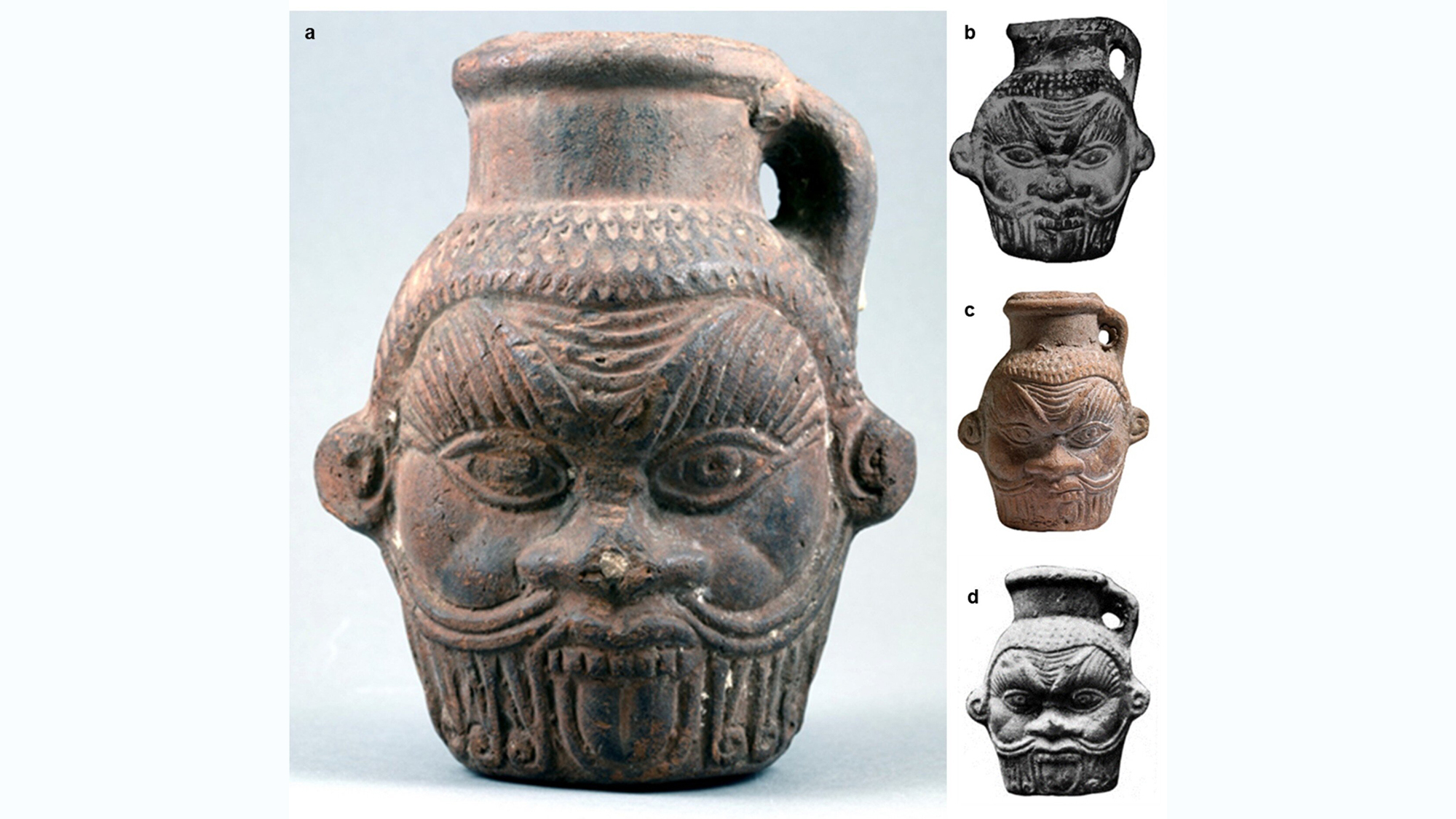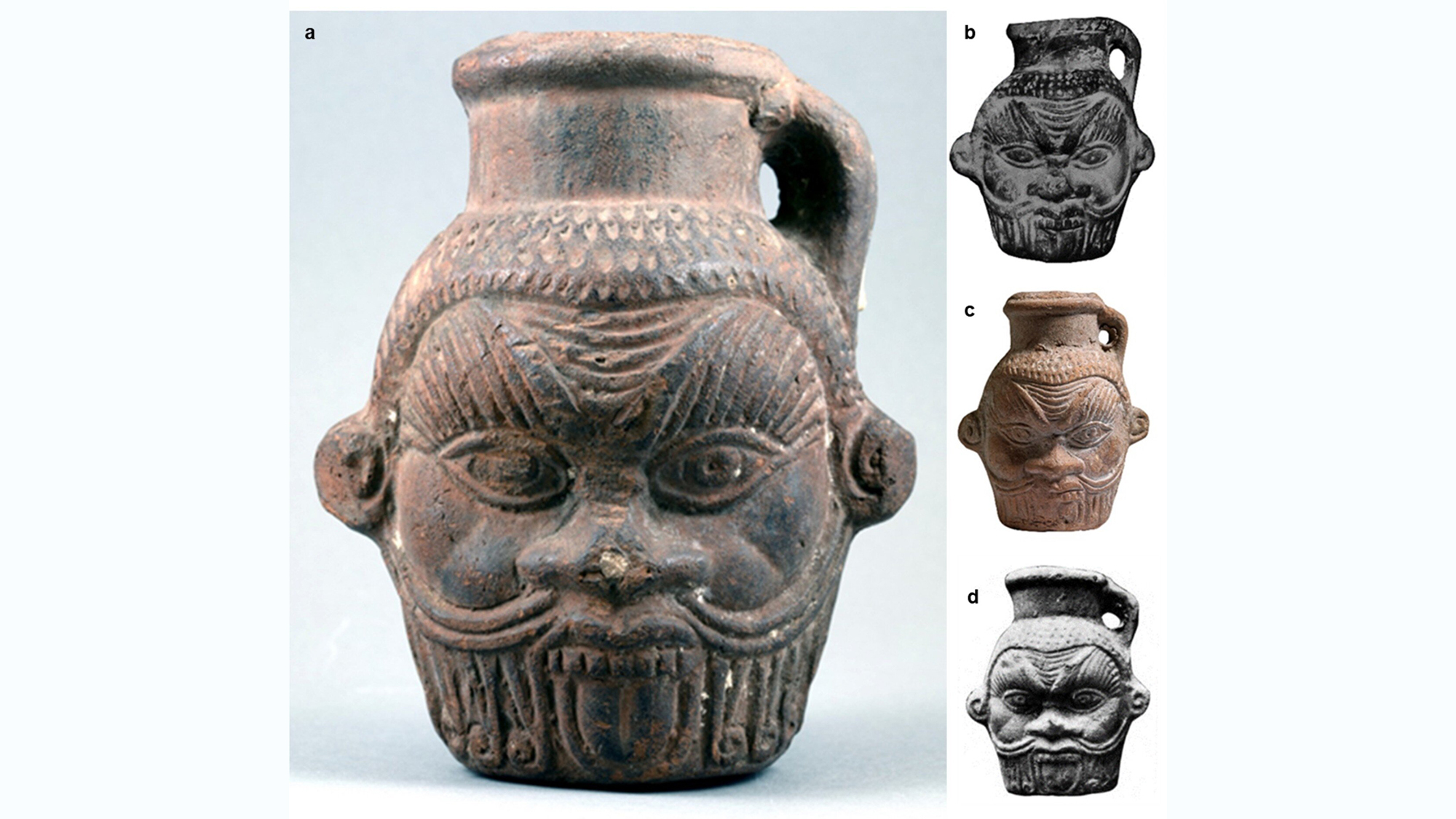
One of the ancient Egyptian pantheon’s most celebrated deities was Bes–an impish, feline god associated with motherhood, childbirth, and homes. Archeological evidence indicates his popularity stretches across thousands of years, most notably in the form of ceramic drinking vessels called Bes mugs or Bes vases. The drink that often filled these cups has long remained a mystery, but researchers now believe they can confirm their previous hypothesis pinpointing many key ritualistic ingredients, as well as why and when Egyptians broke out their Bes mugs. Two categories stand out in particular among the ancient concoction’s many components—hallucinogenic plants and bodily fluids.
As Ars Technica notes, this isn’t the first time experts have attempted to study the residual contents of Bes mugs, offering sacred water, wine, beer, or milk, as well as medicinal liquids or perfume as possible explanations. These past analyses, however, offered few concrete results.
To finally solve the mystery, experts led by Davide Tanasi at the University of Southern Florida recently analyzed samples scraped from the inside lining of a rare, 2nd century BCE Bes mug now located at the Tampa Museum of Art. Using “cutting-edge proteomics, metabolomics, genetics techniques, and synchrotron radiation-based Fourier Transformed Infrared microSpectroscopy,” the team categorized the mug’s various organic residues. Those results, published on November 13th in Nature’s Scientific Reports, make it clear how Egyptians used the drinkware, at least during the Ptolemaic Era.
“There’s no research out there that has ever found what we found in this study,” Tanasi said in a university profile on November 14th. “For the first time, we were able to identify all the chemical signatures of the components of the liquid concoction contained in the Tampa Museum of Art’s Bes mug, including the plants used by Egyptians.”
According to the study’s authors, all of the plant-derived ingredients featured psychotropic and medicinal properties. They pointed in particular to the presence of Peganum harmala, or Syrian rue, whose seeds are known to induce dreamlike visions through their alkaloids, harmine, and harmaline. Another detected plant—the blue water lily (Nymphaea cerule)—can act as psychoactive sedative.
“[W]e can conclude that Peganum harmala and Nymphaea cerule were deliberately used as sources of psychoactive substances for ritual purposes,” researchers wrote in their study.
Along with fruit-based alcohol, Egyptians flavored the drink with pine nuts, honey, and sesame seeds, while the addition of grapes and possibly licorice gave the liquid a blood-like hue. But additional chemical elements indicate the Bes mug’s contents weren’t just imitations of bodily fluids—they were a vital part of the drink itself.
“In addition to plant-based substances, proteomic analyses indicated a high presence of human proteins within the residue,” researchers wrote. While many of those proteins fell within categories “normally classified as contamination,” the team “nonetheless… identified several other proteins.” These suggest the “deliberate addition” of human fluids “like breast milk, mucous fluids (oral or vaginal), and blood.” The bodily secretions, however, line up with Bes’ association with pregnancy, fertility, and the household.
[Related: This ancient Egyptian vessel once held a hallucinogenic brew.]
“Egyptologists believe that people visited the so-called Bes Chambers at Saqqara when they wished to confirm a successful pregnancy because pregnancies in the ancient world were fraught with dangers,” said Branko van Oppen, the Tampa Museum of Art’s curator of Greek and Roman artwork. Knowing this, van Oppen and the study’s co-authors theorize the mixture of psychedelic plants, alcohol, and human-derived ingredients “may have been used in a dream-vision inducing magic ritual within the context of this dangerous period of childbirth.”
These rituals may have also involved recreating the Egyptian “Myth of the Solar Eye,” in which Bes defeated the bloodcraving goddess, Hathor, by offering her an alcoholic, sedative-laced drink disguised as blood.
“Religion is one of the most fascinating and puzzling aspects of ancient civilizations,” Tanasi said. “With this study, we’ve found scientific proof that the Egyptian myths have some kind of truth and it helps us shed light on the poorly understood rituals…”

